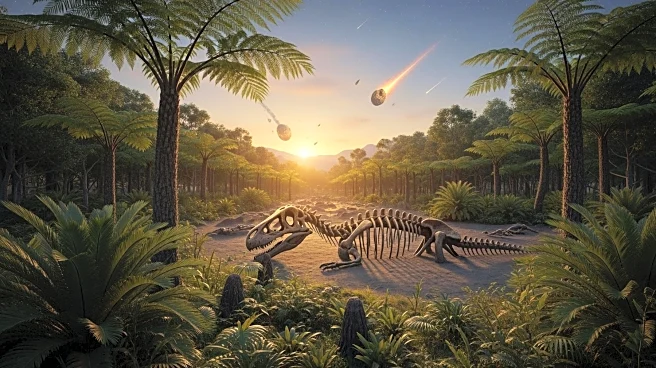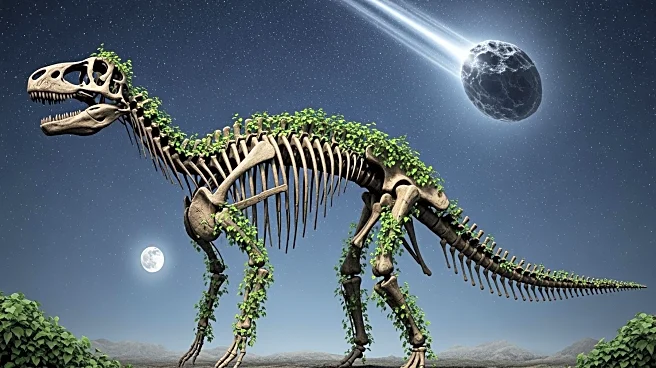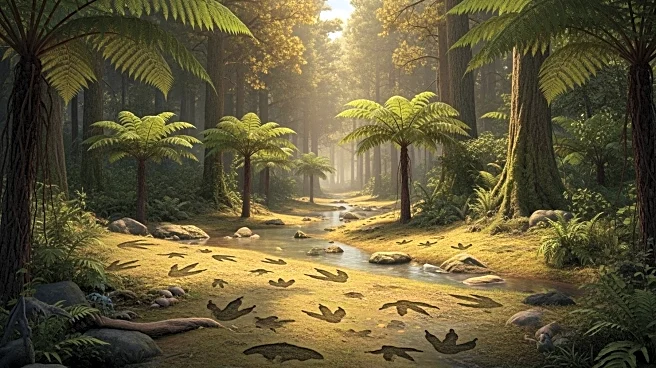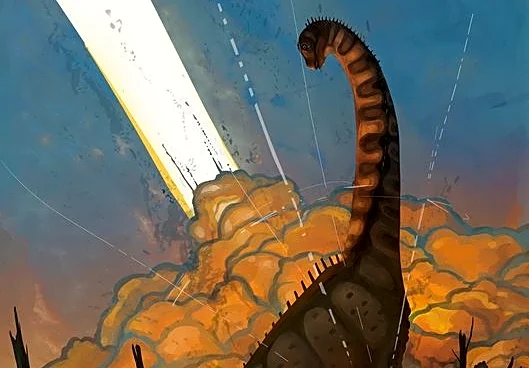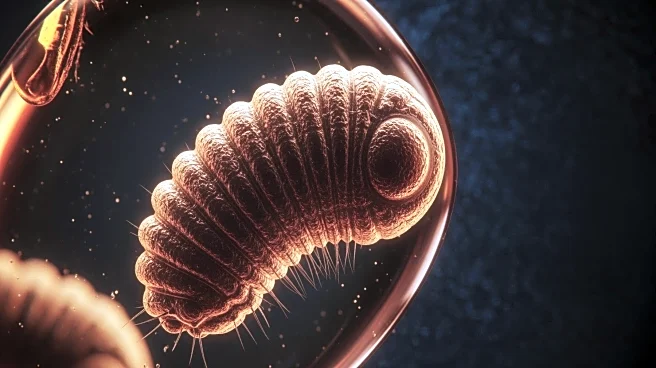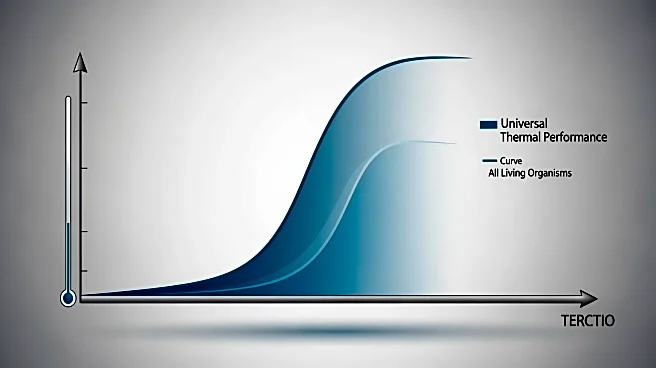What's Happening?
A recent study published in Science by researchers from Baylor University, New Mexico State University, and The Smithsonian Institution, among others, challenges the long-held belief that dinosaurs were
in decline before the asteroid impact 66 million years ago. The research, conducted in the San Juan Basin of northwestern New Mexico, found evidence of vibrant dinosaur ecosystems in the Naashoibito Member of the Kirtland Formation. High-precision dating places these fossils between 66.4 and 66 million years old, indicating that dinosaurs were thriving right up until the asteroid impact. The study suggests that dinosaurs were divided into distinct 'bioprovinces' based on regional temperature differences, rather than geographical barriers like mountains or rivers.
Why It's Important?
This discovery is significant as it reshapes the understanding of dinosaur extinction, suggesting that their demise was not due to a gradual decline but rather an abrupt event caused by the asteroid impact. This challenges previous theories and highlights the resilience and fragility of life on Earth. The research underscores the importance of protected landscapes in providing insights into past ecosystems and their responses to global changes. The findings also have implications for understanding how life recovers after mass extinction events, as seen in the rapid diversification of mammals following the dinosaurs' extinction.
What's Next?
The study opens new avenues for research into the ecological and evolutionary dynamics of prehistoric life. Further investigations could explore how different dinosaur species adapted to their environments and how these adaptations influenced their survival and extinction. The research also prompts a reevaluation of other mass extinction events and their impact on biodiversity. Scientists may continue to study the Naashoibito Member and other similar formations to gain deeper insights into the factors that contributed to the resilience and eventual extinction of dinosaurs.
Beyond the Headlines
The study highlights the role of temperature in shaping prehistoric ecosystems, a factor that continues to influence biodiversity today. Understanding these historical patterns can inform current conservation efforts and strategies to mitigate the impacts of climate change on modern ecosystems. The research also emphasizes the importance of interdisciplinary collaboration in uncovering complex ecological histories.


